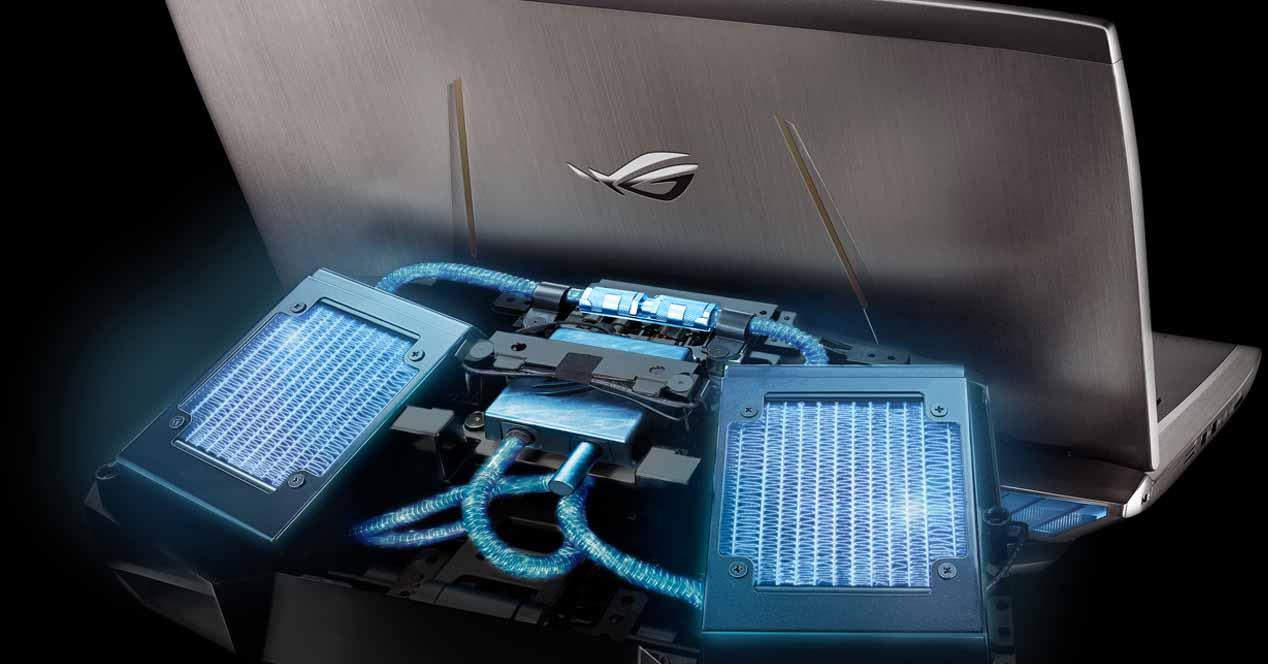Being able to cool a laptop with liquid cooling would be a big innovation, as a big problem with laptops and especially those designed for gaming is that with the little space they have inside, systems cooling systems are usually quite inefficient; and in the end almost all laptops suffer from temperature issues. However, if at this point they don’t seem portable with this type of cooling, that’s for something, and we’ll tell you about it.
Why is liquid cooling not possible on laptops?
Mainly because of the size. You can make (and in fact, as we’ll tell you later, it’s been tried before) water blocks that are flat enough to fit inside a laptop without increasing its thickness too much, but the larger problem is that the pump does not. can miniaturize so much, just as the radiator cannot be reduced so much since its efficiency in dissipating heat depends largely on its area (for this reason, for example, an AIO with a 240mm radiator is generally more efficient than one with 120mm radiator).
Essentially, if you wanted to fit a closed liquid cooling circuit into a laptop, it would have to be significantly enlarged in size to accommodate both the pump and a radiator that has sufficient area to be able to dissipate heat using fans, and if so, the laptop computer it would lose its raison d’être because it would literally lose almost all of its “portability”. With the technology we have today, you can’t fit full liquid into a laptop without making it gigantic.
What about hybrid solutions?
Already in the past we have seen hybrid solutions that integrate traditional cooling in the laptop but which in turn have the possibility of connecting them to a docking station that integrates a liquid cooling circuit, as for example we have already seen it in the famous ASUS GX700VO.
However, if this famous laptop seems familiar to you for being the first in the world to integrate a similar system, you will remember that it was a huge fiasco and, in addition, it turned out to have many problems due to the connections. tubes and liquid (it was necessary to fill the deposit permanently). In addition, the equipment was of considerable size and weight, not to mention the mooring which had to be repaired as there was the pump, two radiators and the rest of the circuit, which made the laptop not exactly so ” portable”.
Not so long ago, the famous overclocker der8auer mounted a homemade liquid cooling system on an Acer Predator gaming laptop with considerable success, as he managed to significantly reduce the operating temperatures of the equipment. The problem is the same, we have to have the water blocks inside the laptop and the inlet and outlet of the coolant in self-locking tubes to connect the rest of the circuit.
Although these hybrid liquid cooling systems for laptops prove to be more efficient than any conventional air cooling system in laptops, you are again losing the essence of what a laptop is because you will have to have a fixed place. to which to connect the “dock” with radiators, pump and other components necessary for the operation of liquid cooling.
Will we see liquid cooling in laptops at some point?
As we have shown, approximations have already been made but in all cases with a hybrid system that removes the bulkier components of the laptop. With the technology we have now, it is impossible to fit the whole system into a laptop without increasing its size too much, because with the thickness that they have now, there is literally no pump and radiator under conditions, so unfortunately that’s not something we’re going to see, at least not in the short or medium term.
In order to be able to integrate liquid cooling systems into laptops, the way of moving liquid and dissipating heat would have to evolve in some way, especially so as not to need a large surface radiator in which to dissipate. the heat. How to do it? There are surely research teams who will study it, but for the moment it is neither possible nor knows how to do it.










